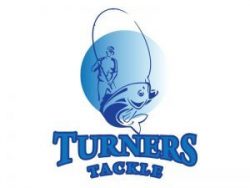Coastal Foraging in the United Kingdom: A Guide to Harvesting Nature’s Bounty
Coastal foraging in the United Kingdom offers an immersive and sustainable way to connect with nature while discovering a diverse array of edible treasures along the shoreline. From wild seaweeds and succulent shellfish to flavorful coastal plants, the coastal ecosystem is a rich source of culinary delights. This comprehensive guide aims to provide you with the knowledge and skills to embark on a safe and enjoyable coastal foraging adventure, respecting the environment and embracing the bountiful offerings of the UK coast.
Section 1: The Basics of Coastal Foraging
1.1 Understanding Tides
Understanding tidal patterns is fundamental to successful coastal foraging. Low tide exposes a variety of intertidal organisms, providing ample opportunities for harvesting. Familiarize yourself with tide tables specific to your foraging location and plan your excursions accordingly.
1.2 Local Regulations
Before venturing out, check local regulations regarding foraging. Some areas may have restrictions or protected zones to preserve sensitive ecosystems. Respect these regulations to ensure sustainable foraging practices.
1.3 Identification Skills
Developing identification skills is crucial for safe foraging. Invest in reputable field guides, attend foraging workshops, and consider joining local foraging groups. Start with easily identifiable species and gradually expand your knowledge as you gain experience.
Section 2: Essential Coastal Foraging Equipment
2.1 Baskets and Bags
Carry a sturdy basket or bag for collecting your foraged finds. Choose a container with good airflow for seaweeds, and opt for sustainable, reusable materials to minimize environmental impact.
2.2 Gloves
Wear gloves, especially when handling shellfish or prickly plants, to protect your hands from cuts, stings, or allergic reactions.
2.3 Foraging Tools
Carry a small knife or scissors for harvesting plants, a rake for gathering shellfish, and a bucket for transporting your finds. Choose tools that are appropriate for the specific foraging activities you plan to undertake.
Section 3: Common Edible Plants and Seaweeds
3.1 Sea Purslane (Halimione portulacoides)
- Identification: Fleshy, succulent leaves.
- Uses: Ideal for salads, stir-fries, or pickling due to its salty and tangy flavor.
3.2 Rock Samphire (Crithmum maritimum)
- Identification: Succulent, jointed stems with small, divided leaves.
- Uses: Adds a unique flavor when pickled, blanched, or incorporated into salads.
3.3 Sea Beet (Beta vulgaris subsp. maritima)
- Identification: Dark, glossy leaves with a spinach-like appearance.
- Uses: Suitable for both cooked and raw preparations, such as salads or cooked greens.
3.4 Dulse (Palmaria palmata)
- Identification: Reddish-purple fronds with a crinkled texture.
- Uses: Perfect for snacking, salads, soups, and stir-fries due to its sweet and smoky taste.
3.5 Nori (Porphyra spp.)
- Identification: Flat, dark-green or blackish fronds.
- Uses: Widely known for sushi wraps, nori can also be used as a garnish for soups and salads or crumbled as a seasoning.
Section 4: Shellfish and Seafood
4.1 Mussels (Mytilus spp.)
- Identification: Dark, oblong shells clustered on rocks.
- Uses: Delicious when steamed, added to soups, or incorporated into seafood dishes.
4.2 Cockles (Cerastoderma edule)
- Identification: Rounded, ridged shells.
- Uses: Boiled, pickled, or added to pasta dishes for a flavorful addition.
4.3 Limpets (Patellidae family)
- Identification: Conical shells attached to rocks.
- Uses: Can be eaten raw or cooked, but harvesting may be regulated in some areas.
4.4 Winkles (Littorina spp.)
- Identification: Small, spiral-shaped shells.
- Uses: Boiled, served with vinegar, or added to seafood dishes for a unique texture.
Section 5: Safety Precautions
5.1 Pollution
Avoid foraging in areas with visible pollution. Check local advisories for water quality and adhere to guidelines to ensure the safety of your foraged harvest.
5.2 Shellfish Toxins
Stay informed about shellfish toxins, as some areas may be subject to contamination. Check for local warnings and adhere to guidelines regarding shellfish consumption.
5.3 Sustainable Harvesting
Harvest only what you need and leave enough for the ecosystem to thrive. Follow ethical foraging practices to contribute to the long-term health of coastal ecosystems.
Section 6: Recipes and Culinary Inspiration
6.1 Foraged Salad
Combine sea purslane, rock samphire, and sea beet for a nutritious and flavorful salad. Add a drizzle of locally sourced olive oil for a coastal touch.
6.2 Seaweed Stir-Fry
Sauté dulse and nori with sea beet and other foraged greens for a delicious stir-fry. Add a dash of soy sauce and sesame oil for depth of flavor.
6.3 Mussel Linguine
Use foraged mussels to create a flavorful linguine dish with garlic, white wine, and herbs. Garnish with freshly chopped sea parsley for a burst of freshness.
Section 7: Respecting the Environment
7.1 Leave No Trace
Minimize your impact by avoiding trampling on fragile ecosystems. Leave no litter behind and follow the principles of “Leave No Trace” to preserve the natural beauty of the coastal environment.
7.2 Conservation
Support marine conservation efforts by participating in beach clean-ups and promoting sustainable practices. Contribute to the well-being of coastal ecosystems by respecting their delicate balance.
7.3 Share Knowledge
Share your foraging knowledge responsibly with fellow enthusiasts. Encourage others to forage sustainably and respect the coastal environment, fostering a community of eco-conscious foragers.
Conclusion:
Coastal foraging around the United Kingdom is a rewarding and enriching experience that allows you to not only savor the flavors of the sea but also connect with nature in a profound way. By understanding the basics, respecting the environment, and embracing sustainable practices, you can embark on a coastal foraging adventure that is both enjoyable and eco-friendly. So, gather your foraging gear, set out on the shores, and discover the culinary delights that the UK coast has to offer.


